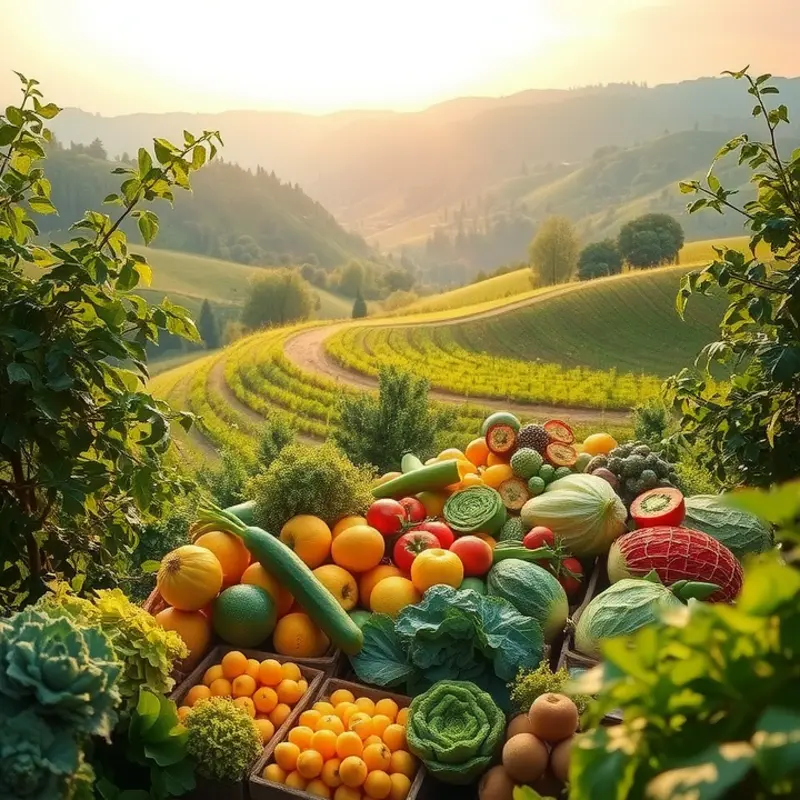Despite popular belief, vegetables don’t lose their vitamins as quickly as many think. Cooking methods can affect nutrient retention, but understanding this can lead to healthier choices during meal prep. Here, we will explore how the cooking process impacts the vitamins in various vegetables, shedding light on common myths surrounding this topic.
The Truth Behind Cooking and Nutrient Loss

Cooking vegetables often comes under scrutiny for allegedly sapping their vitamins. The truth, however, is more nuanced. Cooking does affect the vitamin content in vegetables but not in ways that make them devoid of nutrition. Understanding these effects can help in maintaining their nutritional value.
Vitamins are sensitive compounds, and their stability can vary with cooking methods. Water-soluble vitamins such as vitamin C and certain B vitamins are prone to leaching and degradation. The key misstep is prolonged exposure to high heat through methods like boiling, which can dissolve these nutrients in cooking water. To combat this, consider steaming or microwaving, which reduce cooking time and water contact.
Consider vitamin A, a fat-soluble vitamin. Cooking can actually enhance its bioavailability. This is because cooking breaks down cell walls, making it easier for the body to absorb the nutrient. Carrots, for instance, provide more vitamin A when cooked due to this increased availability.
A common misunderstanding is the impact of cooking on antioxidants. Antioxidants like polyphenols in vegetables can actually increase with certain cooking methods. For example, steaming broccoli increases the availability of its antioxidants compared to boiling. Sautéing can also enhance flavonoid content in some vegetables due to the heat exposure.
However, it’s not just about cooking methods—what happens after cooking matters too. Minimize nutrient loss by storing cooked vegetables properly. Rapid refrigeration can slow down nutrient degradation. For tips on eco-friendly food labeling and storage practices, see eco-friendly food labeling.
Practical tips can maximize nutrient retention. First, don’t peel vegetables like carrots or potatoes before cooking. The skins are nutrient-rich and act as a protective barrier. Secondly, choose dry cooking methods like grilling, roasting, or stir-frying when possible, as these methods use less water. When boiling is necessary, use minimal water and repurpose the water for soups or stews to retain the leached vitamins.
While certain nutrients are reduced during cooking, others become more accessible. By understanding these dynamics, one can enjoy cooked vegetables without sacrificing nutrition. The key is keeping informed and employing cooking methods thoughtfully.
Maximizing Nutrient Retention When Cooking

When it comes to preserving the vitamins and minerals in your vegetables, the cooking method you choose makes all the difference. By selecting the appropriate techniques, you can maximize nutrient retention and make your meals as beneficial as possible.
Steaming is often hailed as one of the best ways to preserve nutrients. Unlike boiling, where water-soluble vitamins such as Vitamin C and the B-complex group can leach into the water, steaming minimizes this loss by reducing contact with water while still using moisture to cook the vegetables effectively.
Another favorable method is sautéing. This technique uses a small amount of oil at high temperatures to cook vegetables quickly, minimizing nutrient loss. Opt for oils rich in unsaturated fats, which can aid in the absorption of fat-soluble vitamins like A, D, E, and K.
While roasting can enhance the flavor profile of vegetables, it’s essential to pay attention to temperature and timing to minimize nutrient destruction. Roasting at lower temperatures can reduce the breakdown of sensitive vitamins.
Surprisingly, microwaving can also be effective at conserving nutrients. This method is quick and uses minimal water, thereby reducing the loss of water-soluble vitamins. Additionally, microwaving requires less cooking time, which further safeguards nutrient integrity.
Preparing vegetables appropriately before cooking is another critical factor. Cutting vegetables into uniform pieces ensures even cooking, which helps retain nutrients across the entire batch. However, it’s better to cut them just before cooking to minimize exposure to air, which can degrade sensitive nutrients like Vitamin C.
Pairing vegetables with complementary ingredients can boost nutrient uptake. For instance, enhancing your dishes with foods containing Vitamin C can improve the absorption of plant-based iron. Furthermore, adding ingredients that carry umami can elevate flavors without compromising nutrient density. This approach aligns well with recommended ingredient pairing methods.
Lastly, consider using less common vegetable parts like stems and leaves, which often contain concentrated nutrients. By expanding the parts you consume, you improve your overall nutrient intake while also reducing food waste.
Each of these cooking practices not only enhances flavor and texture but also underscores the importance of mindful preparation. Incorporating these strategies into your kitchen habits can craft meals as delicious as they are nutrient-filled, offering a simple yet effective way to improve your diet.
Final words
Understanding how cooking affects the vitamin content in vegetables is crucial for making informed dietary choices. While certain cooking methods may lead to nutrient loss, others can enhance flavors and benefits, such as steaming or sautéing, which tend to preserve more vitamins compared to boiling. By being mindful of how you prepare vegetables, you can enjoy their delicious tastes while maximizing their health potential. The key is balance—incorporate a variety of cooking techniques and enjoy raw vegetables when possible to reap the full spectrum of their nutrients.








